Introduction
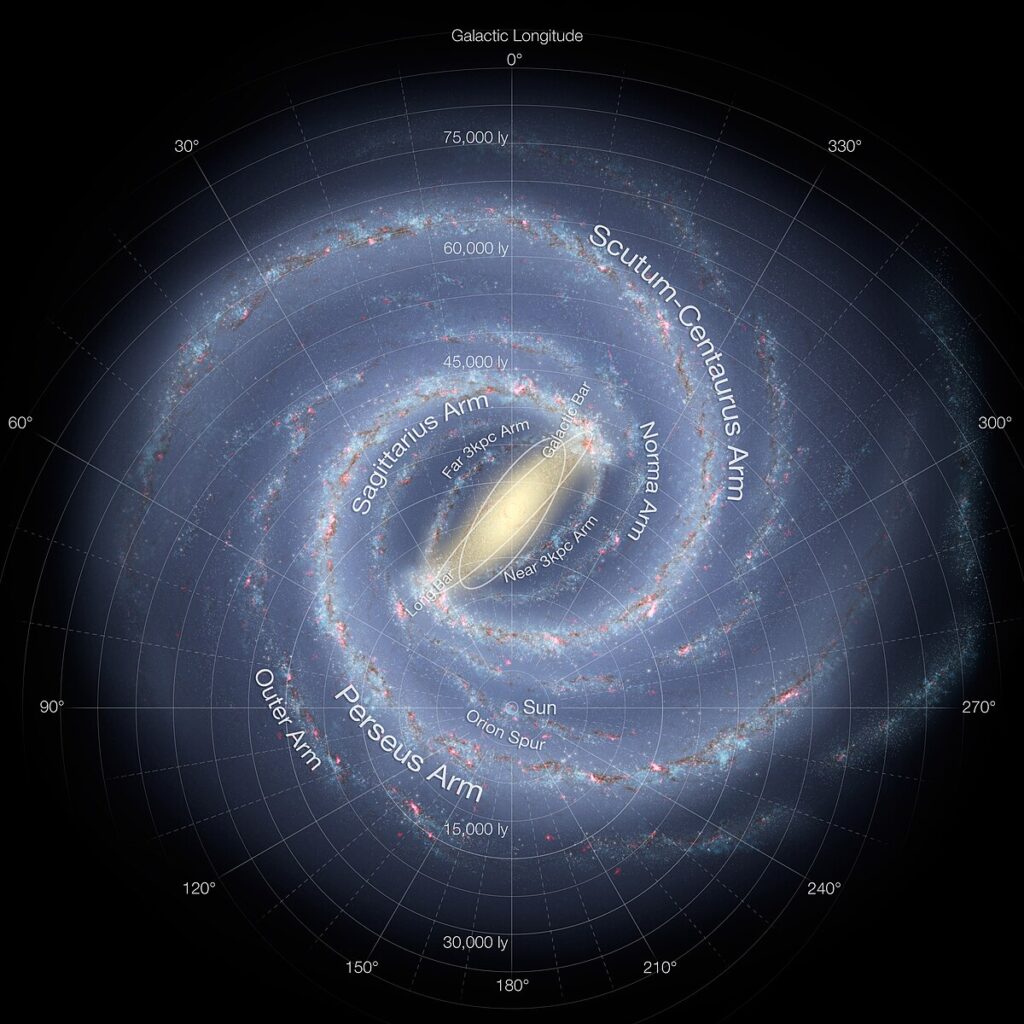
Look up at the night sky, and you’ll see a scattering of stars. But what you’re truly witnessing is just the brightest members of our local neighborhood, a single, vast cosmic city—a galaxy. We live within one, yet its full structure is hidden from our direct view, like a forest whose shape is impossible to discern from deep within its trees.
So, what is the true anatomy of a galaxy? How do these colossal collections of stars, gas, and dark matter organize themselves? The answer is a story of gravity, chaos, and beauty on an unimaginable scale. This guide will be your cosmic map, leading you through the universal blueprint of galactic structure, from the fiery hearts of supermassive black holes to the vast, invisible halos that bind it all together. Let’s embark on a journey to understand the architecture of our Milky Way and the countless other galactic islands in the universe.
The Universal Blueprint: Major Components of a Galaxy
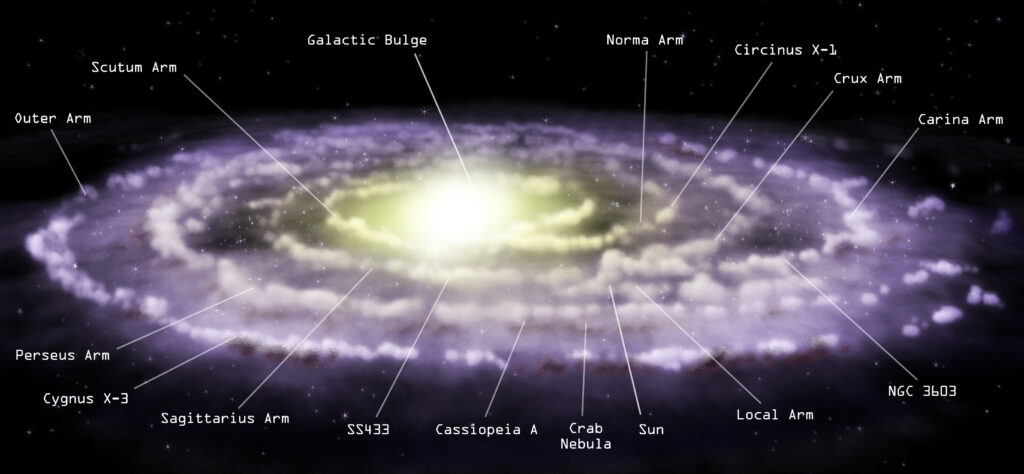
Imagine a galaxy as a living, breathing metropolis. It has a bustling downtown, sprawling suburbs, and even a massive, unseen security force that keeps everything from flying apart. While galaxies come in different shapes, spiral galaxies like our Milky Way serve as a perfect model to explore these universal districts.
The Galactic Core & Bulge: The Downtown Metropolis
At the very heart of every galaxy lies its core, a dense and often turbulent downtown. In the case of our Milky Way, this central region is a mind-bending place. Here, stars are packed together millions of times more tightly than in our solar system’s neighborhood.
At the very center of it all lies the anchor of our entire galaxy: Sagittarius A* (pronounced “Sagittarius A-star”). This is a supermassive black hole, a gravitational monster with a mass equivalent to four million suns. While it’s not a devouring vacuum cleaner, its immense gravity dictates the orbits of nearby stars and influences the entire galactic core.
Surrounding this central black hole is the galactic bulge, a vast, spherical-shaped collection of mostly old, red stars. Think of these as the ancient, historic buildings of the downtown area. They formed early in the galaxy’s history, and their reddish glow gives the central bulge its distinct color. This bustling, dense downtown is the gravitational and energetic heart of the entire galactic empire.
The Galactic Disk: The Sprawling Suburbs and Factories
Spreading out from the central bulge is the galactic disk—a vast, pancake-shaped region where most of the galaxy’s visible action takes place. This is the galaxy’s industrial and residential zone, where the majority of the gas, dust, and younger stars reside.
The disk itself has two key parts:
- The Thin Disk: This is where the action is. It’s a region rich with gas and dust, the raw materials for new stars. Here, brilliant blue-white young stars are constantly being born in stellar nurseries. Our own Sun resides within this thin disk.
- The Thick Disk: This is a more diffuse layer above and below the thin disk, containing an older population of stars. It’s like an older, quieter district underlying the vibrant new construction.
Embedded within this disk are the galaxy’s most iconic features: the spiral arms. These majestic, curving structures are not rigid “arms” that stars are permanently stuck in. Instead, they are like cosmic traffic jams—density waves that move through the galaxy. As gas and dust enter these waves, they compress, triggering intense episodes of star formation. The brightest, youngest stars light up these waves, creating the luminous spiral patterns we see. We live in a smaller spur off one of these major arms, known as the Orion Spur or Orion Arm.
The Galactic Halo: The Vast, Unseen Domain
Encasing the entire disk and bulge is the galactic halo, a gigantic but incredibly faint spherical region. If the disk is the city, the halo is the entire state or province it resides in—vast, mostly empty, but crucially important.
The halo contains three key components:
- Globular Clusters: These are ancient, dense balls of hundreds of thousands of stars, orbiting the galactic center like distant satellites. They are some of the oldest objects in the universe, holding clues to the galaxy’s birth.
- Old Stars: Scattered individual old stars drift through the halo, relics from the galaxy’s violent early formation.
- Dark Matter: This is the halo’s most significant but completely invisible component. We cannot see it or touch it, but we know it’s there because without its immense gravitational influence, the galaxy would fly apart. The visible matter alone isn’t enough to hold everything together. This dark matter halo is the ultimate cosmic scaffolding, providing the hidden framework that defines the very structure of the galaxy.
A Family of Shapes: The Hubble Sequence

Not all galactic cities are planned the same way. In the early 20th century, astronomer Edwin Hubble developed a classification system, often called the “Hubble Tuning Fork,” to make sense of the different shapes we observe. This gives us a way to understand the galactic family tree.
Spiral Galaxies (S): The Grand-Design Cities
These are the picturesque, whirlpool galaxies that capture our imagination. They are characterized by their flat disks, central bulges, and prominent spiral arms. They are actively forming new stars and are rich in gas and dust. Spiral galaxies are further divided:
- Barred Spirals (SB): These galaxies, like our own Milky Way, have a prominent central bar-shaped structure made of stars, with the spiral arms emerging from the ends of the bar. Most spiral galaxies we see today are now classified as barred.
- Unbarred Spirals (SA): These spirals have arms that emerge directly from the central bulge.
They are also classified by how tightly wound their arms are (Sa, Sb, Sc), with “Sa” being the tightest and “Sc” being the loosest and open.
Elliptical Galaxies (E): The Ancient Spheres
From giant football-shaped behemoths to perfect spheres, elliptical galaxies are the old retirees of the galactic world. Designated from E0 (spherical) to E7 (highly elongated), they are smooth and featureless, containing mostly older, red stars. They have very little gas or dust, meaning new star formation has all but ceased. They are the result of a quiet life or, more often, galactic mergers that have stirred up all their gas and dust.
Irregular Galaxies (Irr): The Cosmic Free Spirits
Some galaxies defy classification altogether. Irregular galaxies are the chaotic, free-spirited artists of the cosmos, lacking any distinct spiral or elliptical shape. Often, their bizarre forms are the result of galactic collisions or close encounters that have violently distorted their gravity. The Large and Small Magellanic Clouds, visible from the Southern Hemisphere, are famous dwarf irregular galaxies that are satellites of our Milky Way.
Our Cosmic Home: A Deeper Look at the Milky Way’s Structure
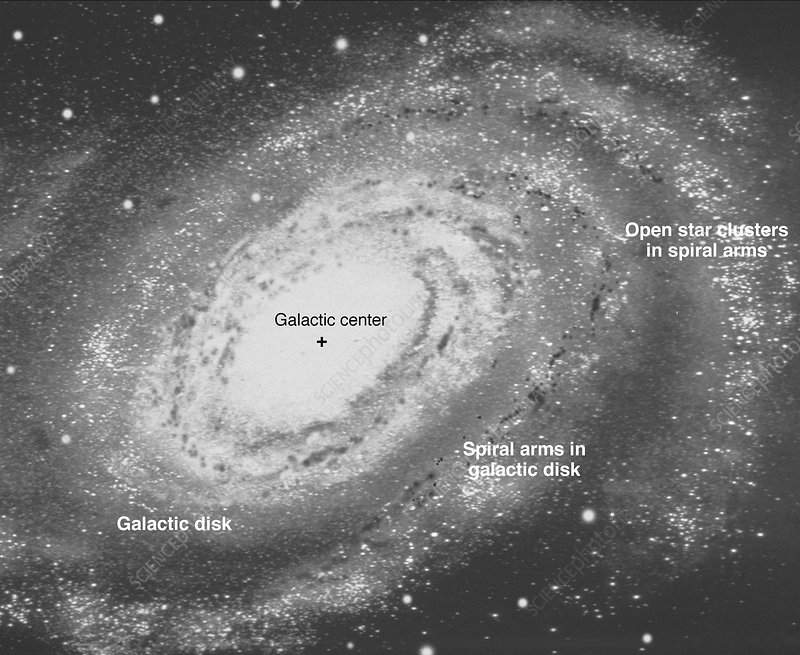
So, where do we fit into all of this? For centuries, understanding the structure of our own Milky Way was a profound challenge. Being inside it is like trying to draw a map of London while standing in a dense fog on a single street corner.
How did we figure it out?
- Pioneering Mapping: Astronomers like Harlow Shapley used the distribution of globular clusters in the halo to first pinpoint the center of the galaxy in the direction of Sagittarius.
- Radio Astronomy: Since visible light is blocked by cosmic dust, radio telescopes allowed us to peer through the murk and map the structure of the galactic disk, revealing the spiral arms.
- Modern Space Missions: Today, missions like the Gaia spacecraft are revolutionizing our understanding. Gaia is precisely measuring the positions and motions of over a billion stars, effectively creating a first-ever 3D dynamic map of our galactic home.
What does this map tell us?
We now know we live in the galactic suburbs. Our Solar System is located within the Orion Spur, a minor spiral arm, about 26,000 light-years from the bustling downtown core. It takes our Sun about 230 million years to complete one “galactic year,” or one orbit around the center. We are situated in a relatively quiet region, which may have been a crucial factor in allowing life to develop and thrive on Earth.
The Invisible Foundation: Dark Matter’s Role in Galactic Structure
We’ve now toured the visible parts of a galaxy. But the most important component in its structure is the one we cannot see. The concept of dark matter is not just a side note; it is fundamental to why galaxies exist in their current form.
The evidence is in the speed. According to the laws of gravity, stars and gas on the outer edges of the galactic disk should be orbiting much more slowly than those closer to the center (just as Pluto orbits the Sun more slowly than Earth). But when astronomers measured these rotation speeds, they found something shocking: stars far out in the disk orbit at almost the same high speed as those near the center.
This “flat rotation curve” can only mean one thing: there is a huge amount of invisible mass, spread throughout the galactic halo, providing extra gravity. This mass—dark matter—is the true foundation of the galaxy. The beautiful spiral structure we see is just the visible decoration on a framework made of something we cannot see or yet fully understand. Without this dark matter halo, the galaxy would simply not have enough gravity to hold itself together, and it would spin itself apart.
Galactic Evolution: How Structure Changes Over Time
A galaxy’s structure is not static; it’s a snapshot in a billion-year-long movie. Galaxies evolve, change, and interact, and their structure tells the story of their past.
The Role of Mergers and Collisions: Galactic Cannibalism
The universe is a dynamic and sometimes violent place. Galaxy mergers are one of the primary drivers of galactic evolution.
- Major Mergers: When two large spiral galaxies of similar size collide, their delicate disk structures are destroyed in a gravitational dance. The resulting chaos often leads to the formation of a new, larger elliptical galaxy. All the gas and dust are used up in a burst of star formation, leaving behind a “red and dead” elliptical. This is the fate predicted for our Milky Way when it collides with the Andromeda Galaxy in about 4.5 billion years.
- Minor Mergers & Accretion: Our galaxy is also constantly consuming smaller dwarf galaxies, absorbing their stars into the halo. This “galactic cannibalism” is a slow but steady way for a galaxy to grow.
Secular Evolution: The Internal Makeover
Not all change is violent. Secular evolution refers to the slow, internal changes that reshape a galaxy over eons. One of the most important is the formation and evolution of the central bar in spiral galaxies. These bars are not permanent; they can form from instabilities in the disk and can later dissolve or strengthen. They play a crucial role in funneling gas towards the galactic center, feeding the supermassive black hole, and influencing star formation.
Frequently Asked Questions (FAQ) About Galactic Structure
Q: What type of galaxy is the Milky Way?
A: The Milky Way is classified as a Barred Spiral Galaxy (Type SBc). It has a prominent central bar of stars, with two major and several minor spiral arms winding out from the ends of the bar.
Q: Where is our solar system located in the galaxy?
A: We are situated in the galactic disk, within a minor spiral arm called the Orion Spur. We’re about 26,000 light-years from the galactic center, far from the dense and chaotic core.
Q: What is at the very center of our galaxy?
A: At the very center of the Milky Way lies a supermassive black hole called Sagittarius A* (Sgr A*). It has a mass of about 4 million times that of our Sun and is the gravitational anchor for our entire galaxy.
Q: How do we know what the Milky Way looks like if we’re inside it?
A: It’s a challenge! We use multiple techniques: mapping the distribution of globular clusters, using radio telescopes to see through dust clouds, and, most recently, using space missions like Gaia to meticulously plot the positions and motions of millions of stars to build a 3D model from the inside out.
Conclusion: The Architecture of the Cosmos
From the brilliant, star-forming spiral arms to the silent, invisible embrace of the dark matter halo, the structure of a galaxy is a complex and dynamic masterpiece. It is a system shaped by billions of years of gravity, collisions, and internal evolution. Understanding galactic structure is more than just cataloging celestial parts; it’s about understanding our own cosmic ancestry and our place in the universe.
We are temporary residents of a single star, within a single arm, of a single galaxy among billions. Yet, by learning the architecture of our cosmic home, we connect ourselves to the vast, grand narrative of the cosmos—a story of order emerging from chaos, and of beautiful structures woven across the fabric of space and time.

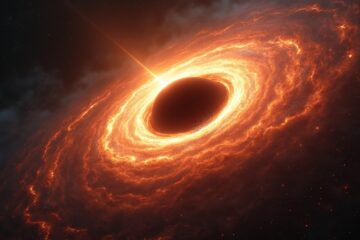
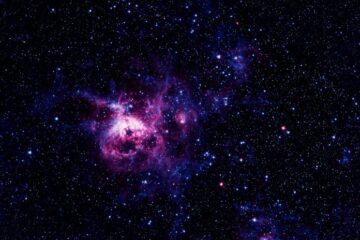
0 Comments